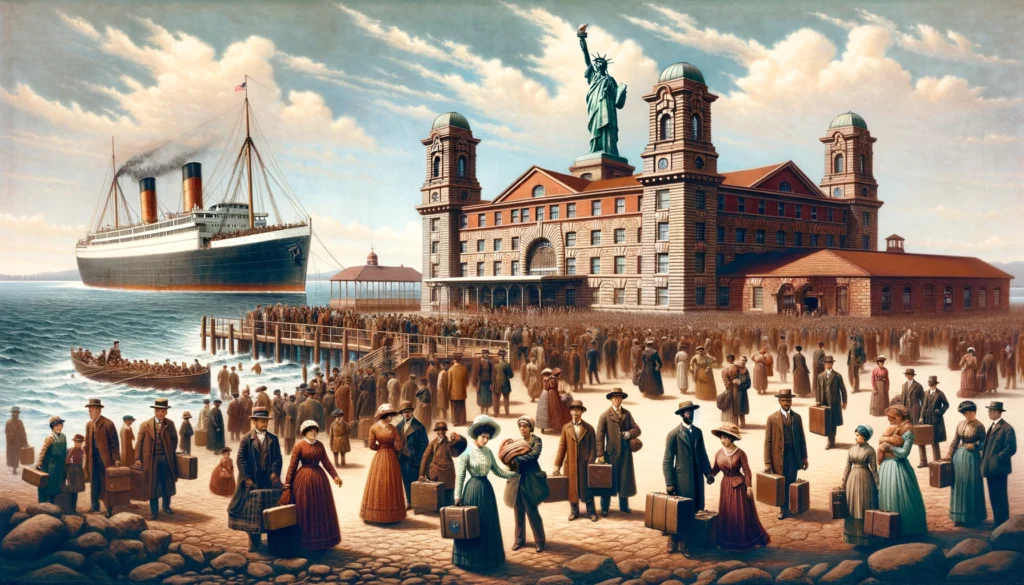Ellis Island, often referred to as the ‘Gateway to America,’ stands as a potent symbol of the American Dream. Nestled in the shadow of the Statue of Liberty in New York Harbor, this small island was the first American soil that millions of immigrants touched, hopeful for a better future. From 1892 to 1954, Ellis Island processed over 12 million immigrants, each with a unique story of courage and resilience. This article explores the historical significance of Ellis Island, its impact on American society, and its enduring legacy.
A Historical Overview
The operation of Ellis Island as an immigration station began on January 1, 1892, when Annie Moore, a young Irish girl, became the first person processed through the newly opened facility. Over the next six decades, the island would become the busiest immigration inspection station in the United States. Immigrants from across Europe and other parts of the world passed through its doors, each subjected to rigorous health and legal inspections designed to determine their fitness for entry into America.
The Immigrant Experience
The journey to Ellis Island was fraught with challenges. Many immigrants traveled in harsh conditions, spending their life savings to voyage across the Atlantic in overcrowded ships. Upon arrival, they were ushered into the Great Hall for processing, which could last hours or days. The inspections were thorough; doctors and inspectors used a series of quick tests to assess the health and vitality of each newcomer, looking for any signs of disease or disability that might make them a burden to the state.
Despite the anxiety of inspection, for many, Ellis Island was a place of hope. The successful passage through Ellis Island meant entry into a new life, opportunities for work, and the promise of freedom and democracy. The island not only served as a processing center but also as a place where many saw their dreams begin to take shape.
Ellis Island Today
After closing in 1954, Ellis Island fell into disrepair, until its restoration in the 1980s. It was reopened to the public in 1990 as part of the Statue of Liberty National Monument, managed by the National Park Service. Today, it houses the Ellis Island National Museum of Immigration, where visitors can explore extensive exhibits detailing the immigrant experience and the history of the site. The museum not only educates but also serves as a poignant reminder of the struggles and triumphs of those who passed through its doors.
Legacy and Conclusion
Ellis Island remains a powerful symbol of America’s multicultural heritage. It stands as a reminder of the country’s complex history of immigration and its ongoing impact on national identity. The stories of those who entered America through this island continue to resonate, reflecting the broader narrative of American immigration and the diverse fabric of the nation.
In the modern digital age, where the journeys of the past can inspire the innovations of the future, we are reminded of the bridges between different eras and the continuous flow of ideas. Just as Ellis Island acted as a gateway for millions, today’s platforms like https://thevapery.com.ua/ offer gateways to new experiences, connecting us with history, community, and the endless possibilities that lie ahead.


